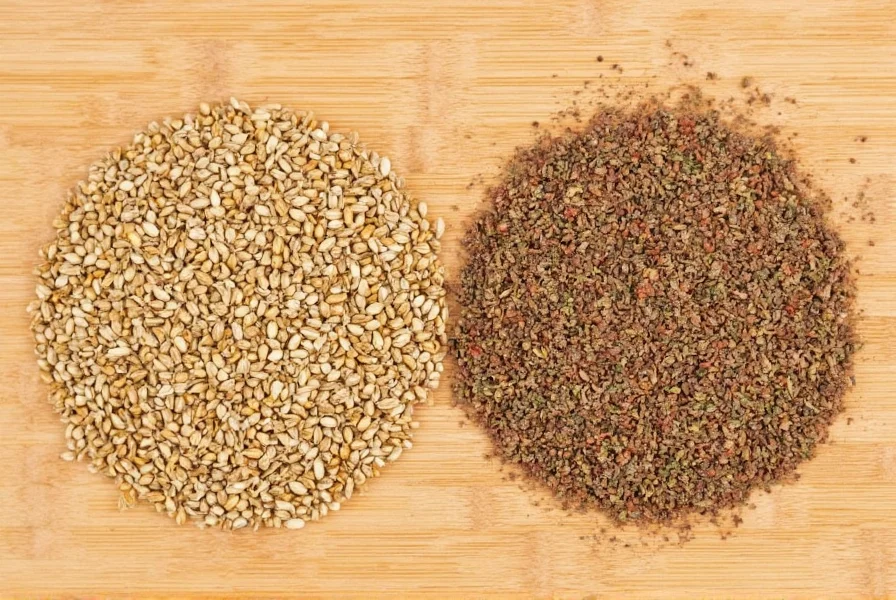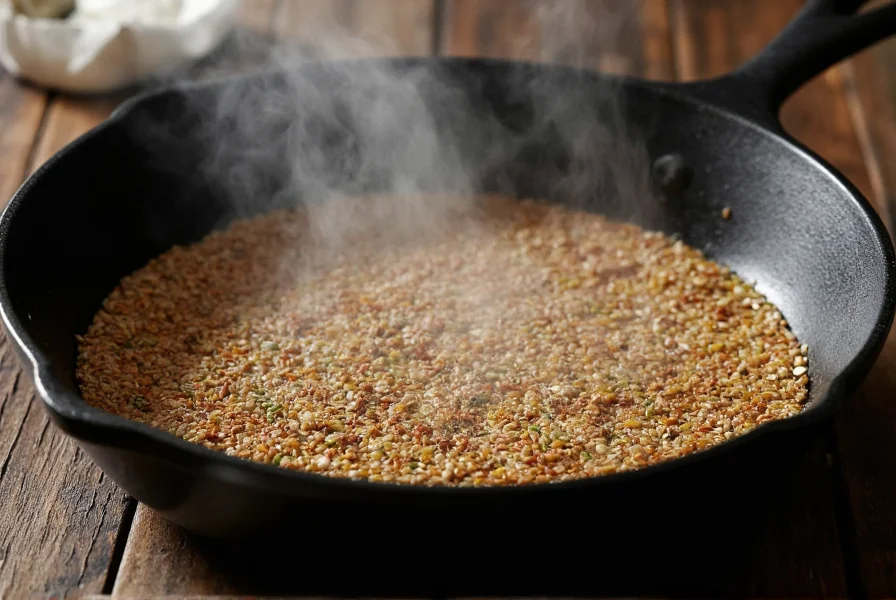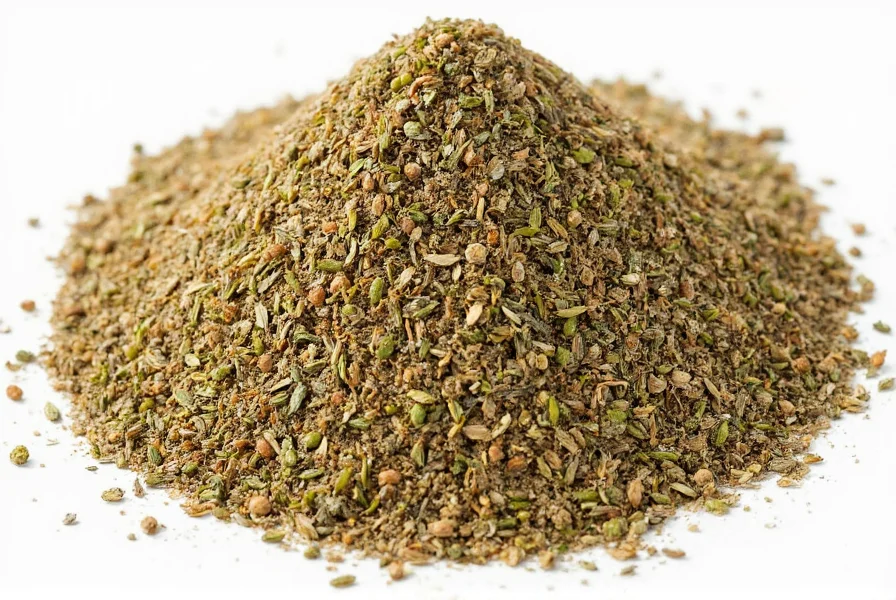Many home cooks and even experienced chefs occasionally mix up coriander and cumin, leading to unexpected results in recipes. This confusion stems from similar seed appearances and overlapping use in global cuisines. Understanding the difference between coriander and cumin is crucial for authentic flavor development in dishes ranging from Indian curries to Middle Eastern stews.
Botanical Origins: Two Distinct Plants
Coriander (Coriandrum sativum) belongs to the Apiaceae family, sharing relations with parsley and carrots. The entire plant is useful—fresh leaves are cilantro, while the dried seeds are coriander. Cumin (Cuminum cyminum), however, comes from a different plant in the same family but with unique characteristics. Cumin seeds develop on smaller, more delicate flowers than coriander, and the plants have different growth requirements and harvesting methods.
Visual Identification Guide
| Characteristic | Coriander Seeds | Cumin Seeds |
|---|---|---|
| Shape | Rounded, spherical | Elongated, crescent-shaped |
| Color | Light tan to yellowish-brown | Dark brown to reddish-brown |
| Size | Approximately 3-5mm diameter | Approximately 4-6mm length |
| Texture | Smoother surface | Distinct ridges along length |

Flavor Profiles Compared
Coriander seeds offer a citrusy, slightly sweet flavor with hints of sage and floral notes. When toasted, they develop warm, nutty characteristics that work beautifully in baked goods and spice blends. Cumin delivers an earthy, warm, and slightly bitter profile with distinctive pungent notes. Properly toasted cumin has a smoky depth that forms the backbone of many curry powders and chili seasonings.
The difference between coriander and cumin becomes especially apparent when tasting them raw. Coriander has a milder, more approachable flavor that won't overpower dishes, while cumin makes a bold statement that can dominate if used excessively. Understanding coriander vs cumin taste profiles helps prevent recipe disasters when one gets substituted for the other.
Culinary Applications Across Global Cuisines
Coriander features prominently in Scandinavian breads, Indian dhana dal, and Middle Eastern za'atar blends. It pairs exceptionally well with citrus, mint, and other warm spices like cardamom. Cumin serves as the foundation for Mexican chili powders, North African harissa, and Indian garam masala. It complements paprika, garlic, and tomatoes particularly well.
When exploring whether you can substitute coriander for cumin, consider the dish's flavor requirements. In mild applications like salad dressings or light soups, coriander might work as a cumin substitute with added smoked paprika for depth. However, in traditional chili or curry recipes, substituting coriander for cumin creates a fundamentally different flavor profile that misses the dish's authentic character.
Regional Naming Confusion Explained
The confusion between coriander and cumin often stems from regional terminology differences. In some parts of Asia and the Middle East, local names for these spices get translated inconsistently into English. Additionally, certain spice blends contain both ingredients, leading to misattribution of flavors. Some commercial products mislabel blends, further complicating identification for home cooks researching is coriander the same as cumin.
Proper Storage Techniques
Both spices benefit from airtight containers away from light and heat, but they have different shelf lives. Whole coriander seeds maintain potency for 1-2 years, while ground coriander lasts 6-12 months. Cumin seeds stay fresh for 2-3 years when stored properly, with ground cumin lasting 1-2 years. Toasting either spice briefly in a dry pan before use dramatically enhances their flavors—a technique particularly valuable for older spices that have lost some potency.

Common Substitution Guidelines
While not ideal, substitutions become necessary when one spice is unavailable. For cumin, consider equal parts coriander plus a pinch of smoked paprika and black pepper. For coriander, try caraway seeds in half the quantity, as they share some citrus notes but have stronger anise characteristics. Always remember that understanding the difference between coriander and cumin helps make informed substitution decisions rather than random replacements.
Why the Distinction Matters in Cooking
Professional chefs emphasize that confusing coriander and cumin alters a dish's fundamental flavor architecture. In Indian cuisine, coriander forms the base of many masalas while cumin provides the distinctive earthy backbone. In Mexican cooking, cumin defines traditional chili flavors, whereas coriander appears more in fresh salsas and marinades. Recognizing why coriander and cumin are confused yet distinct helps cooks develop more authentic and balanced flavor profiles.
Frequently Asked Questions
Can I use coriander instead of cumin in chili?
While possible in a pinch, substituting coriander for cumin significantly changes chili's flavor profile. Cumin provides the earthy, smoky base essential to traditional chili. If substituting, use half the amount of coriander plus a pinch of smoked paprika to approximate cumin's depth.
Why do some recipes list both coriander and cumin?
Many global cuisines intentionally combine both spices to create complex flavor layers. Coriander's citrus notes balance cumin's earthiness, producing a more rounded taste profile. This combination appears frequently in Indian, Middle Eastern, and North African spice blends.
Is ground coriander the same as cumin powder?
No, ground coriander and cumin powder come from different plants. Ground coriander has a lighter color and citrusy flavor, while cumin powder appears darker with a stronger, earthier taste. They should not be used interchangeably without recipe adjustments.
How can I tell if my cumin has gone bad?
Fresh cumin has a strong, warm aroma. If it smells dusty or barely noticeable, it's lost potency. Perform the rub test: rub a small amount between your palms—if the aroma doesn't intensify significantly, it's time to replace your cumin.
Does coriander taste like cilantro?
No, coriander seeds and cilantro leaves come from the same plant but have completely different flavor profiles. Cilantro leaves have a bright, citrusy, sometimes soapy taste (for those with the gene), while coriander seeds offer warm, nutty, citrus notes without the leafy freshness.











 浙公网安备
33010002000092号
浙公网安备
33010002000092号 浙B2-20120091-4
浙B2-20120091-4